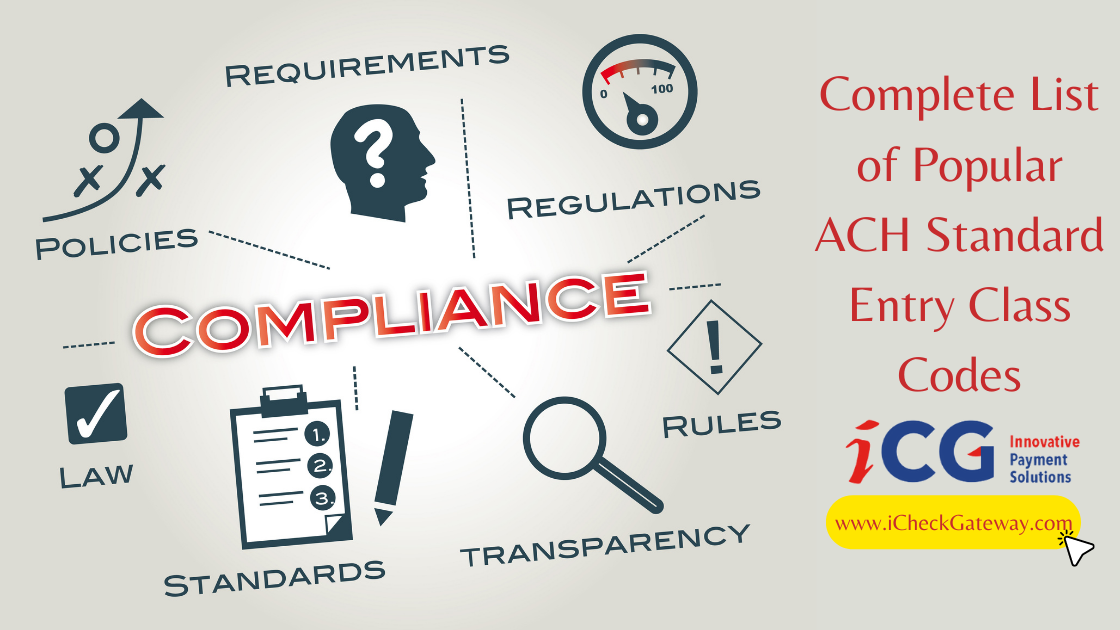Efficiency.
Efficiency is one of the most critical things that the global financial system has mastered over the last couple of centuries. Every technological advancement has taken financial services operations across the globe to a whole new level. ACH standard entry class codes are a prime example of efficiency, and today, we’ll discuss their importance. Don’t worry; these codes are not nearly as dangerous as they sound. In fact, they are pretty easy to understand once you learn the basics!
What are ACH Standard Entry Class Codes?
Wouldn’t it be cool if we could know everything about a person just by knowing their name? Well, it turns out that the ACH Standard Entry Class (SEC) Codes help you do just that! No, they don’t tell you everything you need to know about a person/business. Instead, they give you a lot of information about the transactions/entries from their bank account.
Simply put, the SEC codes give you important information about a particular transaction/entry/item with a small 3-letter string of characters.
Example: Let’s say your employer sends you your monthly salary using ACH payment solutions. It is their responsibility to add the correct SEC code to the transaction details before sending the amount to you. This SEC code will help in the identification of various parameters to settle any disputes that may arise in the future.
Important: These SEC codes are not related to the Security and Exchanges Commission, also popularly known as SEC.
What do SEC codes tell you?
In total, there are about 23 different types of Standard Entry Class (SEC) codes, and each of them gives us the following information:
- Type of item/entry:
- Commercial
- Consumer
- Commercial and Consumer (Both)
- Nature of item/entry:
- Single entry
- Recurring
- Availability of addenda records with the entry
- Type of process used for authorization
These codes are especially helpful in understanding and solving disputes for the amounts processed through the check collection system. So, if you ever face a problem with one of the transactions from your account, you can call your regional ACH solutions operator and give them this code. It will help them identify the information mentioned above, in an instant.
The Security Aspect of SEC Codes
Primarily, the SEC code gives us information about the authorization received by the originator of the transaction. The originator is not always the one who is sending the money through ACH technology. Instead, the originator may be requesting the money. In such cases, the SEC code also helps us identify the type of transaction on the receiver’s end.
- ACH Debit Transaction: To carry out the ACH debit transaction, the originator needs written/verbal permission from the account holder (recipient).
- ACH Credit Transaction: The originator does not need any such permissions from the recipient to process an ACH credit transaction.
The 4 Most Popular ACH Standard Entry Class Codes
Out of the 23 different SEC codes, you will most likely encounter one of the following 4 codes on your statements regularly.
(You can learn more about how to fill the authorization forms for NACHA by clicking the links in the subheadings)
PPD – Prearranged Payment and Deposit
- Account Type: Consumer
- Transaction Type: Single or Recurring
- Type of Entry: Credit or Debit
- Authorization Type: Written (for consumer debit transaction), Oral or not required (for consumer credit transaction)
TEL – Telephone-Initiated Entry
- Account Type: Consumer
- Transaction Type: Single or Recurring
- Type of Entry: Debit Only
- Authorization Type: Orally (authorized over a telephone call)
Note: The recipient and the originator should ideally have an existing relationship to process transactions via TEL. However, if no such previous relationship exists, the recipient needs to start the call in this case (without any outbound calls from the originator first). The originator must record the verbal confirmation of the recipient and give them the written consent form before the date of the settlement of funds.
Telephone credit card fraud is rising. Here's how to protect your business from telephone fraud.
WEB – Internet Initiated / Mobile Entry
- Account Type: Consumer Only
- Transaction Type: Single or Recurring
- Type of Entry: Debit Only
- Authorization Type: Written (over the internet)
CCD – Corporate Credit or Debit Entry
- Account Type: Commercial (Business Accounts) Only
- Transaction Type: Single or Recurring
- Type of Entry: Credit or Debit
- Authorization Type: Written (for all kinds of transactions)
As an originator, it is your responsibility to collect and produce (during a dispute) the proof of authorization received from the recipient.
If you fail to list the correct SEC code, some ACH partners will classify it as a PPD transaction (for transfers to individuals) or CCD (for a corporate trade exchange) by default.
A Checklist for the Authorization of Transfer of Funds
As a consumer originator, you will need to fill out a form for each transaction that requires authorization. If you want NACHA to process your transactions correctly, you need to ensure that all the relevant information is readily available for access.
Refer to the following links to know more about the different types of information required for these different SEC codes.
- Proper Authorization: PPD Transactions
- Proper Authorization: TEL Transactions
- Proper Authorization: WEB Transactions
- Proper Authorization: CCD Transactions
Summary:
As the originator of transactions, it is supercritical that you have the correct ACH standard entry class SEC codes for every debit and credit entry on your statement. Having these codes along with the statement of authorization from the recipient will help you quickly solve any disputes regarding insufficient or uncollected funds and bill payments.
iCheckGateway.com is the preferred partner for NACHA for seamless ACH payment solutions and automation technology.
Want to get started with top-tier ACH technology solutions? Schedule a call with us today!
Date originally published: January 20, 2022



